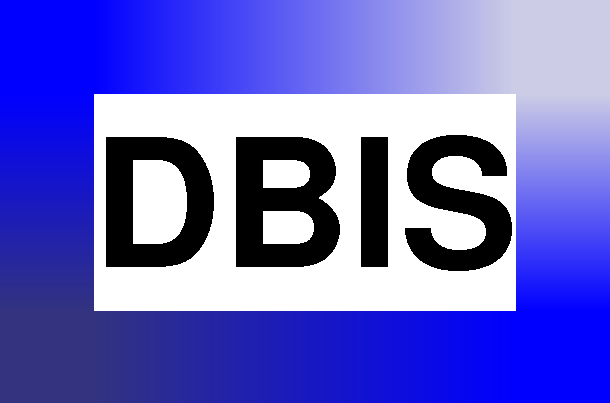Semistructured Data and XML
Summer 2006
Prof. Dr. Wolfgang May
Assistants: Erik Behrends,
Oliver Fritzen
The course will be given in english in case that there are english-speaking
students attending.
Date and Time: Wednesday 11-13 ct, Thursday 9-11 ct.
Lecture and Exercises/Lab mixed (see announcements on this page)
Rooms:
GOE: HS 1 (Math.Inst., Bunsenstrasse 3-5, 1.Stock, Südflügel)
CLZ: Multimediahörsaal (also nicht im CUTEC, sondern Tannenhöhe)
6 ECTS credits (Studies in Applied Informatics),
Diplom Wirtschaftsinformatik: 4 WiInf-credits,
(elective/"Wahlbereich" Informatik).
The course is transmitted to TU
Clausthal (ELAN project, taking place in the "Multimediahörsaal").
At Clausthal, contact
Dietmar Sommerfeld
for administrative issues.
Course Description
One of the most important facts that lead to the overall success of XML
is that the "XML world" combines a lot of already known concepts in an
optimal way for coping with a broad spectrum of requirements.
The course will first review some of these preceding (partially even historic)
concepts (network database model, relational databases, object-oriented
databases) and the integration of data and metadata (SchemaSQL). Then,
the idea of "semistructured data" is introduced by showing early
representatives that helped to shape the XML world (F-Logic, OEM).
In the main part, XML is presented as a data model and a markup-meta-language,
and the current languages of the concepts of the XML world are systematically
investigated and applied: DTD, XPath, XQuery, XSLT, XLink, XML Schema,
SQL/XML, RDF/OWL.
The lecture uses the geographical sample database "Mondial"
in its XML version for illustrations.
For practical exercises, the XML software is installed in the IFI CIP
Pool.
-
Students @GOE: IFI pool account application via
the user interface at the assigned computers in the pool,
-
Students @CLZ: IFI pool account application via
mail to
Gunnar Krull.
The software playground page can be found
here.
The recorded lectures can be found here.
Dates & Topics
- 19.4.:
Administrativa, Overview, Introductory Presentation "XML".
[Slides 2-on-1]
[Slides 4-on-1]
- 20.4.:
first: some Look and Feel - playing with eXist.
General Concepts and Notions of the database area.
Slides: Relational Model
- 26.4.: (Lecture given at CLZ with transmission to GOE.)
Earlier database models, concepts and extensions:
Basic Concepts and Notions; example and recall: relational model.
Slides: early DB concepts
- 27.4.: Earlier database models, concepts and extensions:
Network data model.
- Some references to read about database history (optionally):
- 3.5.: "History" continued: Object-Oriented Model
- 4.5.: "History" continued: SchemaSQL
- Ab naechster Woche beginnt die Vorlesung mittwochs
um 11:10 Uhr.
- 10.5.: "History" continued: early semistructured data models.
Slides: early semistructured data models
- 11.5.: Early semistructured data models (cont'd).
XML: data model, language, DTDs etc.
Slides: XML basics
- 17./18.5.: XML: data model, language, DTDs etc. (cont'd)
Exercise sheet 1: XML & DTD
(PostScript,
PDF)
- 24.5.: (Lecture given at CLZ with transmission to GOE.)
XPath: navigation and addressing language for XML
Slides: XPath
- 25.5.: holiday (Himmelfahrt/Ascension Day)
- 31.5.: Discussion of Exercise sheet 1,
solution [postscript,
pdf],
XPath (Cont'd)
- 1.6.: XPath (Cont'd)
Exercise sheet 2: XPath
(PostScript |
PDF)
- Since CLZ has no lectures during 4.6.-10.6. (Pfingstpause), there will
be no SSD&XML lecture on 7.6. and 8.6.
- 14.6., 15.6.: XPath (Cont'd)
[Hinweis
auf XML-Praktikum]
- 21.6.: Discussion of Exercise Sheet 2,
solution [postscript,
pdf];
sample XML document fragment for Ex.4
- 22.6.:
The query language: XQuery
Slides: XQuery
Exercise sheet 3: XQuery
(PostScript |
PDF)
- 28.6. XQuery (Cont'd)
- 29.6. Updating XML Data (same slides set as XQuery); The transformation language: XSLT
Slides: XSLT
- 5.7. XSLT (Cont'd). (Lecture given at CLZ with
transmission to GOE.)
Exercise sheet 4: XSLT
(PostScript |
PDF)
- 6.7.
Discussion of sample solutions for XPath/XQuery Exercises
[postscript,
pdf]
-
07.07. (11:00 - 13:00 Uhr c.t., MN67) Additional
meeting together with the SQL-Praktikum:
SQL and XML (optional).
SQLX: SQL and XML datatypes
The course gives a short introduction to XML and shows how XML data
is combined with/into relational data, and can be used from SQL.
[Folien]
- 12.7. XSLT (Cont'd).
- 13.7. Global referencing in XML - the linking languages: XPointer and XLink
Slides: XLink
- 19.7. Discussion of Exercise Sheet 4 (XSLT)
Solution [postscript,
pdf];
- 20.7. XML Schema, APIs: DOM/SAX, Sonstiges
Slides: XML Schema,
Slides: DOM/SAX,
Literature etc.
- Lecture ends at 21.7. (end of lecture period at GOE)
- All slides of the lecture:
2-on-1,
4-on-1
(except the introductory talk:
2-on-1,
4-on-1)).
(slides can still change slightly - take the version that you printed
once for learning)
Klausur: Mittwoch, 2.8.2006, 10-12h (90 Min.),
MN 67 (CLZ: HS A Mathematik)
Hinweise zur Klausurvorbereitung
- Konzepte verstehen und beschreiben können, und wissen, wann man sie
wo anzuwenden hat; Vor- und Nachteile
- "Programmieren" auf Papier mit XML, DTD, XPath, XQuery, sowie den
XSLT-Grundkonstrukten; wichtigste XML Schema-Konstrukte
- keine Syntaxdetails zu XML Schema - hier sollte bekannt sein, was
man machen kann und wie man z.B. einen einfachen simple- oder complex-Type
erstellt (oder z.B. eine Instanz zu einem vorgegebenen Typ
validieren/angeben/korrigieren).
- Grundideen zu DOM/SAX, XLink verstanden haben und anwenden können
- "History"-Abschnitt: wissen, was die Knackpunkte der jeweiligen Konzepte
waren, und wie sie zur Entwicklung beigetragen haben, bzw. was man davon
prinzipiell in XML&friends wiederfindet.
- Es können auch Aufgaben kommen, wo eine Text-Antwort erwartet wird:
keine Romane mit zuvielen Details schreiben. Kurze, knappe Antwort,
Aufzählung etc ...
- Hier die Klausuren von 2004 und 2005 zum Durchrechnen:
Klausurergebnis
- Klausurergebnis:
[postscript,
pdf]
Bestanden ab 35 Punkten, danach in
5er-Schritten. 1.0 ab 80 Punkten.
- Klausur mit Musterlösung
- Klausur ohne Musterlösung
- Klausureinsicht: einfach bei mir am Büro vorbeikommen und schauen
ob ich da bin oder per Mail Termin ausmachen.
- Wiederholungsprüfungen
(ausschl. für Studierende, die in der regulären Klausur nicht
bestanden haben oder krankgeschrieben waren):
- Göttingen: am 17.10. und ggf. 19.10. mündlich
(Anmeldefrist Munopag bis 30.9. wegen Festlegung von Einzelterminen).
- Clausthal: Oktober oder November (ggf. Koordination mit
Vorlesungsübertragung "Datenbanken").
|
